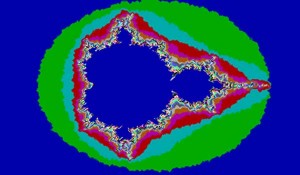James Gleick in 1987 wrote an outstanding book called, Chaos: Making a New Science. The ISBN is: 0-7493-8606-1 and it has been a joy to read.
After finally finishing the book today, I have a few thoughts.
First, the book makes fractals easy to understand. If I ever had any questions about what the Mandelbrot Set was about…then they have been surely answered. You’ll find out how Chaos is not just about disorder. There have been entire teams of people all around the world with different questions related to their specific fields.
Some scientists had questions about discrepancies in meteorological data, others found intricacies in population growth that seemed strange when plotted on a graph. But all of these scientists discovered recurring themes that actually have a serious impact on today’s techn0logy.
For example, encryption and data compression owe a tremendous amount of respect to the pioneers of chaos theory. Their work relating to chaos and “noise” allows for error checking that permits rapid transmission of data over the internet. Without their work, the foundations for advanced digital communication wouldn’t be where it is today.
Not only does the book deal with specific technological triumphs, but it also discusses the difficult process by which rogue scientists trail-blazed a new field of technology. It was not all props and applause for the initial explorers of dynamic systems and strange attractors. Many of the teams in Santa Cruz and other facilities used their own time, money and they scrounged and scavenged for laboratory equipment. Even after making serious breakthroughs, it was a difficult path for the scientists to gain recognition from a reluctant scientific community.
The patterns and concepts brought about by studying Chaos allowed people to understand things like how no snowflakes are exactly the same…and yet they all have distinct similarities. Ideas about how capillary systems are similar to river systems no longer was the realm of artists and poets. They were discovering the rules of bifurcation, iteration and most importantly change.
This book is not a difficult math book. James Gleick presents the information in a narrative and relaxed tone. You’ll read through the pages as if you were reading a good fiction book or a piece of poetry. Because this information is quite beautiful. The words and analogies Gleick uses to discuss the material is nothing short of beautiful and there are even some amazing fractal diagrams that will give hours of entertainment.
-Tyler
